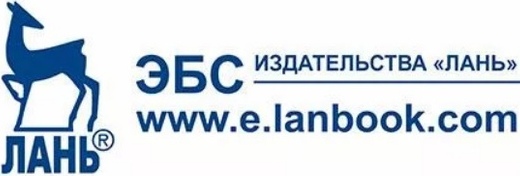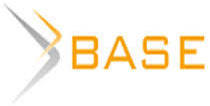СЕРБСКИЕ ИГРЫ В ТВОРЧЕСТВЕ ЙОСИПА СЛАВЕНСКОГО
Aннотация
В творчестве Йосипа Славенского существуют некоторые элементы в рамках более обширных, циклических произведений, которые выступают под одним и тем же названием – Сербская игра. В данной работе рассматривается вопрос происхождения тематического материала (если он оригинальный), использования такого же формального шаблона у всех элементов с таким названием. Разрешается также вопрос о том, идет ли речь об одном и том же, или подобном тематическом материале. Путем сравнительного анализа можно прийти к выводу о способах, использованных композитором для представления происхождения тематики из сербского фольклора, и насколько такая тематика повлияла на выбор формы, ее структуры, и обнаружение соответствующих гармонических и полифонических решений.
Ключевые слова: тематический материал, форма, фольклор, происхождение, гармонические и полифонические решения
К сожалению, текст статьи доступен только на Английском
“The period between the two world wars is characterised by a striking condensation of music occurrences since the works of various generations of composers appeared simultaneously, intertwined” [4, p. 94]. Besides the composers belonging to the so called “Belgrade School” and the proponents of Mokranjac (Stevan Stojanović Mokranjac) and his manner of composition, there created the composers who belonged to Expressionism, among whom Josip Slavenski (his full name was Josip Štolcer-Slavenski) was the most prominent one. He was born on May 11, 1896 in a small town of Čakovec (Croatia) [1, p. 350]. He started his music education in Varaždin and later went to Budapest, where he was instructed in composition by Zoltan Kodalj (Zoltán Kodály). Two years later, his thirst for knowledge led him to Prague where he was taught by composer Višeslav Novak (Višeslav Novak), the pupil of Dvoržak (Antonín Leopold Dvořák). His further music education was continued in Paris, where he learned about the work of B. Bartok (Béla Viktor János Bartók). He returned to Zagreb but his stay and work there was rather brief, not even a year (1923/1924), after which he moved to Belgrade. He taught at a private music school, which is at present known as Music School “Mokranjac”, and since 1937, he taught at Secondary Music School, which was at that time under the supervision of Music Academy and which is at present named after him. During the period after the Second World War up to his death, on November 30, 1955, Josip Slavenski taught composition at Music Academy. His creative work was certainly influenced by the teaching of Zoltan Kodalj, his own knowledge of Bartok’s music, as well as the compositions created by his contemporaries, such as Strauss (Richard Strauss), Scriabin (Alexander Nikolayevich Scriabin), Schoenberg (Arnold Schoenberg), Debussy (Achille-Claude Debussy), Ravel (Joseph Maurice Ravel) and others.
Maria Bergamo (Maria Bergamo) emphasises three phases in the development of Expressionism in music:
- Revolutionary (the beginning of the First World War),
- Constructivist (from 1918 to 1925),
- The stage in which Expressionism was no longer characterised by its distinct style and which developed after the Second World War [4, p. 17].
Describing the bold ideas of the forthcoming Expressionism, the same author believes that the most radical among the composers of the time was Josip Slavenski, whose work “was marked by boldness that other composers, nationally-oriented in their creation, were not ready to accept”. The elements of the first phase of Expressionism in Serbian music, which is believed to have lasted from 1932 onwards, are evident in the works of Josip Slavenski [4, p. 172]. “The power of the music expression of Josip Slavenski results from three principal factors mutually interconnected and belonging to the expressionist method: the expressionist reduction to folklore, the autonomy of the melodic element and the autonomy of the rhythmic element” [4, p. 67].
This composer used the titles of staves of his larger, cyclic compositions as the titles of the separate pieces, and vice versa. The same or similar folklore thematics is found in the compositions or staves with different titles but of the same geographical origin and vigour. The term “Serbian dance” (Srpska igra), as the title of the stave of a larger, cyclic somposition, appears in the following works:
- Symphonic suite “Balkanophonia” (Balkanofonija) (1926-1927) as the first stave of this cycle
- Cycle known as “Balkan Dances and Songs” (Igre i pesme sa Balkana) (1927) as the eighth stave of the cycle named “Serbian Song” (Srpska pesma)
- Symphonic suite “Balkan Dances” (Balkanse igre) (1937-1938) as third stave of the cycle.
”The symphonic compositions “Youth” (Mladost), ”Yugoslav Suites” (Jugoslovenska svita) created for the orchestra, the unfinished two-stave composition “Zagorje”, the composition “Yugoslav Dances and Songs” (Jugoslovenske pesme i igre) created for the violin and orchestra, as well as ‘six folk songs’ created for the string orchestra (or quartet), “Balkanophonia”, created for the symphonic orchestra (1927), i.e. “Balkan Suite” for the string orchestra (1930), were followed by the creation of “Songs and Dances from the Balkans” (1927), composed using the orchestration of certain staves of the piano cycle with the exception of two staves” [3, p. 170]. The same author names these works “Balkan Cycle” (Balkanski ciklus). The comparison of the names of the staves in “Balkanophonia”, “Balkan Suite” and the cycle “Balkan Dances and Songs” leads to a comparative analysis, which want to answer a few questions:
- Whether the melodic line, i.e. the thematics of the aforementioned staves is the same or similar,
- Whether such a thematics, originiating from the same melodic line, is characterised only by the altered orchestration or the harmonic basis,
- Whether the same or similar thematic motivation has the same or similar solution,
- Whether it is a completely new thematics which either originates or does not originate from the same region in Serbia,
- If the thematics is different, whether it might have been found in some other compositions, either individual or being a stave in one cycle,
- Whether it is possible that the Serbian song or dance has taken on the same or similar formal solution from that composition having a different title.
The cycle of 14 piano miniatures “Balkan Dances and Songs” was composed in 1927, the year when “Balkanophonia” was created, as well. Five of the dances from the cycle were further elaborated in the cycle “Balkanophonia”: first stave known as “Folk Dance” and first stave of “Balkanophonia” named “Serbian Dance”. Therefore, these compositions deserve to be examined in this paper. Other staves of “Balkan Dances and Songs”, recognized thematically in “Balkanophonia” are: “Albanian Song” (Albanska pesma – sixth stave) in the second stave with the same title; “Dervish Dance” (Igra derviša – eleventh stave) in “Turkish Dance” (Turska igra – third stave); “Greek Song” (Grčka pesma – twelfth stave) in the fourth stave of the same title; and “Bulgarian Dance” (Bugarska igra – seventh stave) in the seventh stave of the same title.
The first stave of the piano miniatures “Balkan Dances and Songs” was composed as the two-part form with the developing b part. Its thematics is significant as regards this paper since it had an impact on the creation of “Serbian Dance”, the first stave of the orchestra suite “Balkanophonia”.
The atmosphere of “Serbian Song”, eighth stave (i.e., first in the second collection) of the cycle “Balkan Dances and Songs” is different from the atmosphere created by the stave of the same title from the suite “Balkanophonia”. The part a is expressed at the beginning of the stave as the four-takt structure, with frequent changes of the takt (3/4 and 2/4). The part b contains two six-takt sentences, which end the first part of the stave. The second part starts as a continuum composed by the polyphonic combination of both thematic materials. The whole stave is marked by the Oriental scale and tonal instability. The part might be determined as a two-part form.
Starting from, probably, the best known suite of J. Slavenski, named “Balkanophonia”, seven-movement cycle[1] brings the „Serbian dance“ in the form of the first movement. Viewing the entire cycle, this movement is the longest one and formally, the best formed, likewise in the “Balkan Suite“. The thematic material for its first part, originates from the “Folk Dance“ which makes the first movement of the piano cycle “Balkan Dances and Songs“[2]. “The Contrast expression, resting on the genre poles – dancing and lilting, comes to the front plane in the cycle dramaturgy. In parallel with that, there are developed such internal bonds, without which the unity of the artistic whole would face reconsideration. These mutual bonds are created, already in Serbian dance, the widest and most developed section of the suite, which, at the same time, represents its center support“. In the initial 16 beats of Serbian dance (from “Balkanophonia”) the cluster tends to last, as long as possible. Instead of having the background role, it takes the main role, so that it is only in the background that eight-beat whole (theme) may be read, which is constantly repeated. The whole of the stave is a three-part ABA1, where A is composed of the alterating repetition of the first and the second thematic material (a-a1-b-b1-a1-a1-b1-b1), followed by a transition consisting of a and b parts, and the new part, c, and finally a-b. From the initial C-Minor-Major in the transitional section towards the central part, it moves through As-major and As-minor. The central part (119–172) brings completely new thematic material and atmosphere, as well. The central part is based on the folk song “Down there to Constantinople City“ (Tamo dole grada Carigrada) [3, p. 175].
Very strong static, this part begins with, occurs because of the “sound interception on the new pedal formation e+F sharp, like simultaneous IV and V scale degrees ’in h’ in which the last part of the movement is developed“. [3, p. 175]. The short descending motif in the augmented fourth range is repeated four times (119–140), to continue in the minor third range (140–167) and repetition of the entire central fragment. The motif reduction and denser figurations “in secondary parallelisms above the pedal fifth F sharp–flat and c–g.“ [3, p. 175].
Repeated 12-tone chord brings the first part of the section, but now, in the form of a short Coda (167–189) in H-major.
Sanja Grujić [2] describes the melodic basis of “Serbian Dance” in the following way: ”a and b themes are in C-major, whereas their repetition (a1b1) is in H-major with the melodic mode harmonization. Mixolydian C mode (a1 a’1 i b1 b’1) with the harmonization (a’ b b’) by Mixolydian mode (c, d, e, f, g, a (as), b, c) – Slavenski terme this scale as ‘cosmic scale’ in his work ‘Astroacoustics’. The ‘Istra sequence” variant (e instead of es) – the middle part theme – C (gis, a, h, c, d, e)“ [2, p. 72].
The three-part suite “From Serbia” (1925) is significant in the context of this paper owing to its third stave, named “Užičanka” (Užičanka), whose thematics is present in the third stave (“Serbian Dance”) of the orchestra suite “Balkan Dances” (1938)[3]. “Užičanka” contains the eight-takt theme repeated several times, each time in a more complex way. The first two theme expressions (the eight-takt sentence) are in the Balkan G-minor, i.e. the dominant D-minor (due to the melodic finale on tone a), the third expression is on the subdominance, the fourth is along the major dominance, while the following theme expression is bitonal (d-minor and F-major). Starting from takt 65, the theme variation is repeated in g-minor with the same chord present in the first stave of the cycle (des-es-fis-as-c), resolved by T e-minor or VI stage of the Balkan g-minor. The formal analysis states the scheme: a1-a2-a3-a4-b-a5-a6-a7-a8, in which the sentence begins with the theme a consisting of eight takts (structure 2+2+4), and the theme “increases” to 28 takts due to its five repetitions.
The principle of the “variational repetition” is evident in this stave, as it is in the rest of them [5, p. 109]. “The repetition of a smaller or larger number of themes is done by means of various ‘colouring’ effects: instrumental changes and, even more significant, the change of those layers that define the theme (ostinato, accordion blocks, counterpoint melodic lines). Melodic and rhythmic changes of the themes themselves are either rare or nonexistent, whereas the change of the tonal centre, if any, is accomplished by a direct transfer or confclict of musical courses”. The third stave of “Balkan Dances”, named “Serbian Dance”, is recognized by two different parts (AB). The theme of the first part (A), consisting of eight beats, is repetitive (a, a1, a2, a3). This part was composed in the harmonc H-minor with a striking adherence to the dominates. Ostinato contains the quints which, assisted by the counterpoint lead of the voices, contribute to the creation of bitonality ended by the accordion in eight voices. The second part (B) is the continuation of the bitonal part, with F-major resounding, i.e., the theme is in D-minor and the counterpoint in F-minor-major. This is followed by A-minor and the interplay of the string instruments section in C-minor, leading to the culmination in the eleventh tone (75-76). The dissonant ostinato chords represent the basis for the theme fragments in G-minor and E-minor. The pedal quintal tones and G-minor dominates, the basis for the final theme fragments, remain until the end finding its place in the last dissonant chord.
The analysis of all the staves having the same title (“Serbian Dance”) shows that they are simple in form but that their continually richer repetition makes them very close to the structure of the folklore compositions. The repetitions are tonally enriched, they introduce modality, polytonality, novel accordion compositions, clusters, complexity accomplished by the variation of the thematic materials, polyphony or the combination of the thematic materials.
[1] 1. Serbian dance, 2. Albanian song. 3. Turkish dance, 4. Greek song, 5. Romanian dance, 6. From Međumure, 7. Bulgarian dance
[2] First volume contains the sections, as follows: 1. Folk dance, 2. From Croatia, 3. Serbian country dance, 4. Slovenian popular song, 5. Macedonian dance, 6. Albanian song & 7. Bulgarian dance; second volume: 1. Serbian song, 2. Romanian dance, 3. from Rasina, 4. Dervish dance 5. Greek song, 6. Slavic dance and 7. Medjimurje song).
[3] The same thematic material appeared also in “String Quartet No. 4”.

















Список литературы
Список использованной литературы появится позже.